So your spider plant is turning brown at the tips? The most likely reason behind this is water stress — you’re underwatering or overwatering your plant.
However, there are many other reasons why a spider plant can turn brown in the tips. Let’s troubleshoot it together!
Table of Contents
The Spider Plant: A Brief Background
The spider plant is an evergreen perennial houseplant, which means it can live beyond two years and is green all year round.
The spider plant is also known as ribbon plant or spider ivy. The plant is so named because of its spider-like leaves that overflow from the center.
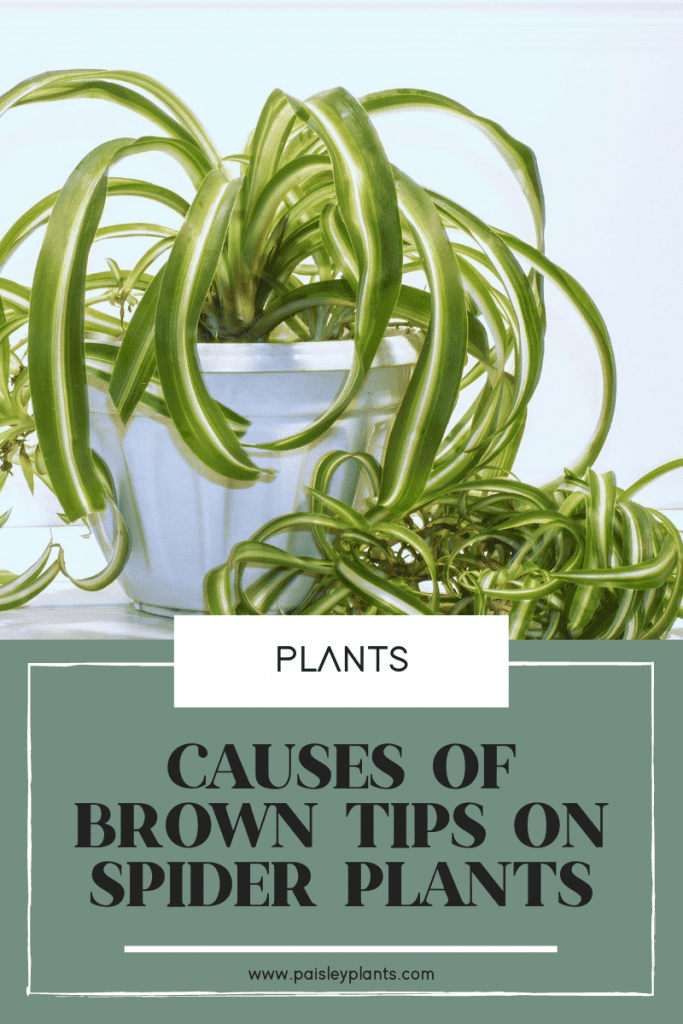
Should I Cut the Brown Leaves?
It’s not necessary. The brown tips on your spider plant are actually dead tissue. The color does not spread to the rest of your plant or even damage it.
The brown tips either dry off or become thin and papery and simply fall off when touched. You can cut the brown tips or not; it doesn’t matter.
So why is your spider plant browning on the tips?
Brown Tips: Possible Causes and Solutions
The tips of your spider plant are browning due to one or more of the following reasons:
- Watering problems
- Humidity problems
- Disease
- Fertilizer problems
- Sunlight problems
I’ll discuss each possible cause and the solution to each in detail.
Watering Problems
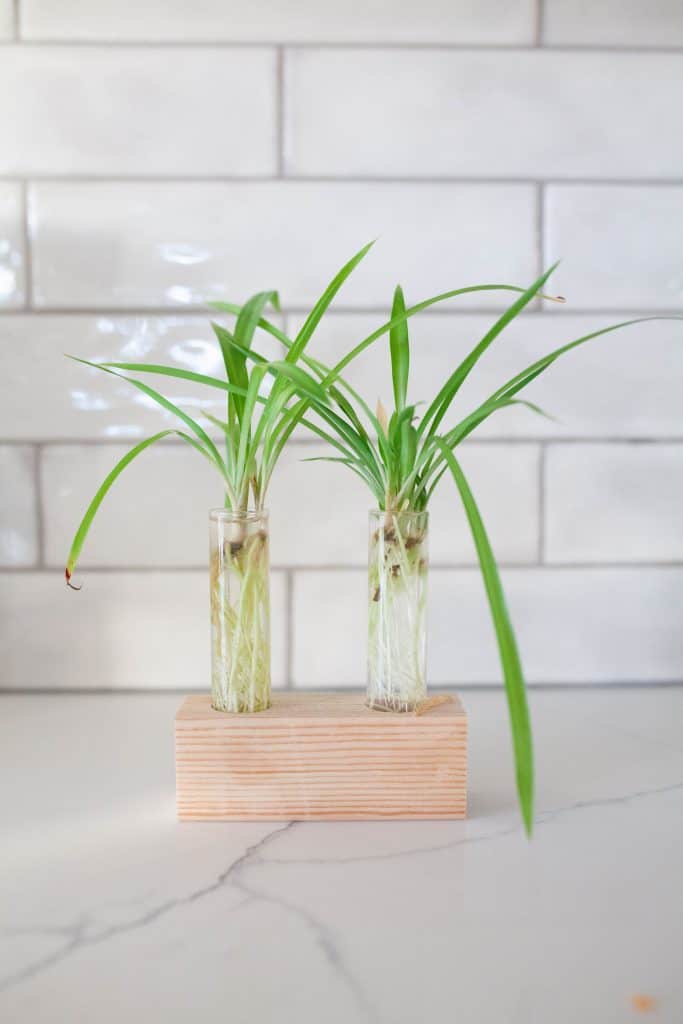
As mentioned earlier, the chief reason for spider plants to brown at the tips is water stress — or watering problems.
You could be overwatering or underwatering your spider plant, and that poses a big problem. A spider plant should be watered when the top 50% of the soil becomes dry. It should be drenched till the water flows through the drainage hole of the pot. Water that has collected in the pot’s saucer should be thrown away.
The spider plant should be watered once a week. However, if the top 50% of the soil is still moist, you should delay and check the following day.
If you are guilty of over- or underwatering your spider plant, don’t worry. There are solutions!
Overwatering
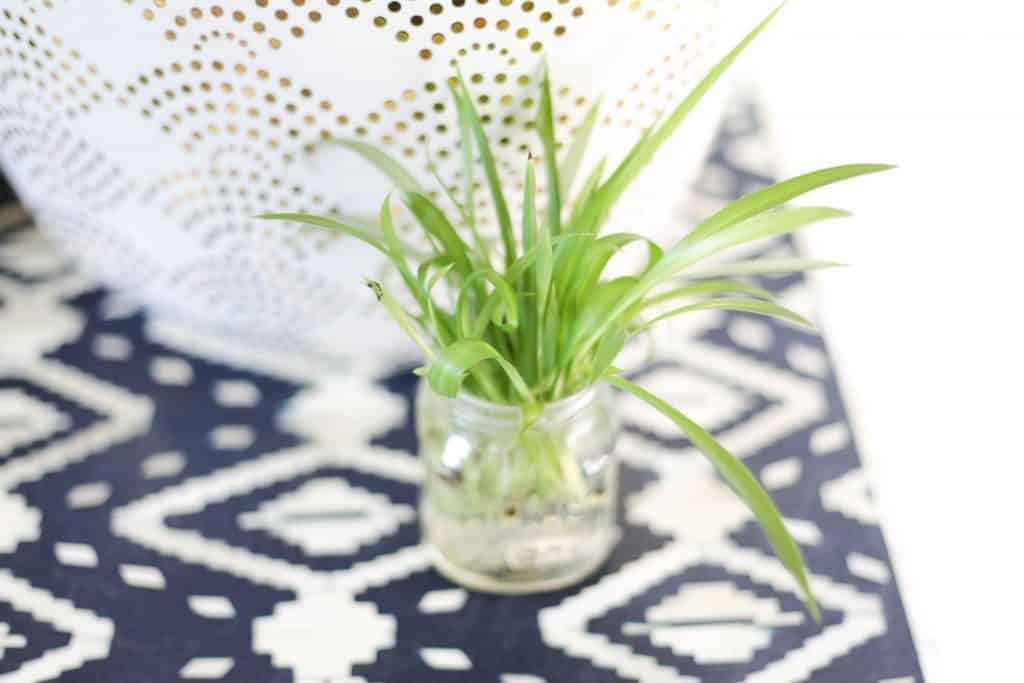
If you’re drenching your spider plant more than once a week, you’re overwatering it. You’re also overwatering it if you’re drenching the soil even when it is moist. You should also be draining the excess water from the saucer.
Solution
If you realized that you’ve been overwatering your plant, immediately remove the plant from its pot. Make a new potting mix and repot your water-infused spider plant.
Then place the newly potted plant in a bright area — with indirect sunlight. Water very lightly until the plant is revived.
Underwatering
If you’ve been leaving your spider plant without water for weeks, then that’s a pretty good guess that it’s the cause of the brown tips. Another sign: the leaves are starting to fade in color.
A healthy spider plant is a vivid green color. If the plant is light green, then it’s not getting enough hydration.
Solution
Immediately water your spider plant thoroughly. Allow the excess water to drain through the pot’s hole, then water it again.
Another solution? Fill a large pot with water, submerge the plant pot under the water. Let it sit for a while and drink, before returning the pot to its original spot.
Tap Water Contents
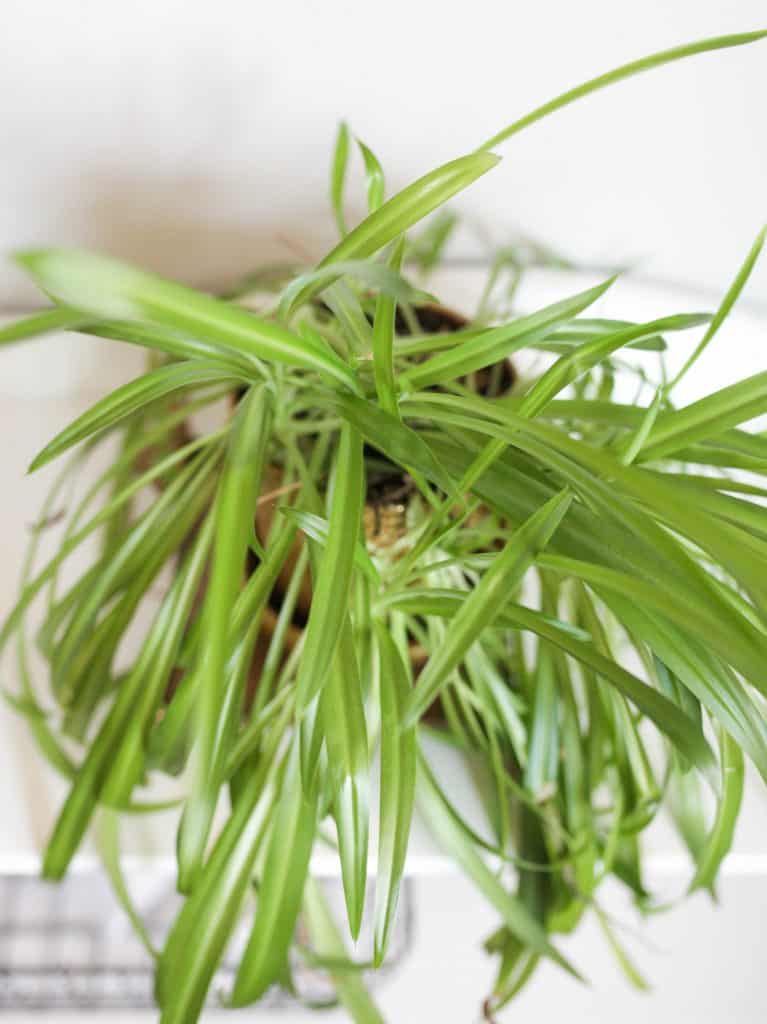
Tap water should not be used in watering plants. It contains chemicals that can damage your spider plant.
The list of chemicals that could be swimming in your tap water will blow your mind: chlorine, mercury, lead, pesticides, herbicides, chloramines, VOCs, radium, solvents, and even arsenic.
They are all bad, trust me. Any of them can damage or kill your spider plant. The brown tips are just a warning sign.
Solution
Start using purified or distilled water to hydrate your spider plants.
Do not use cold or hot water, though, because it can shock the spider plant and make it very weak. Make sure that the distilled or purified water is kept at room temperature.
Or the easiest is to leave your watering can filled up overnight. This will help neutralize the chemicals.
Humidity Problems
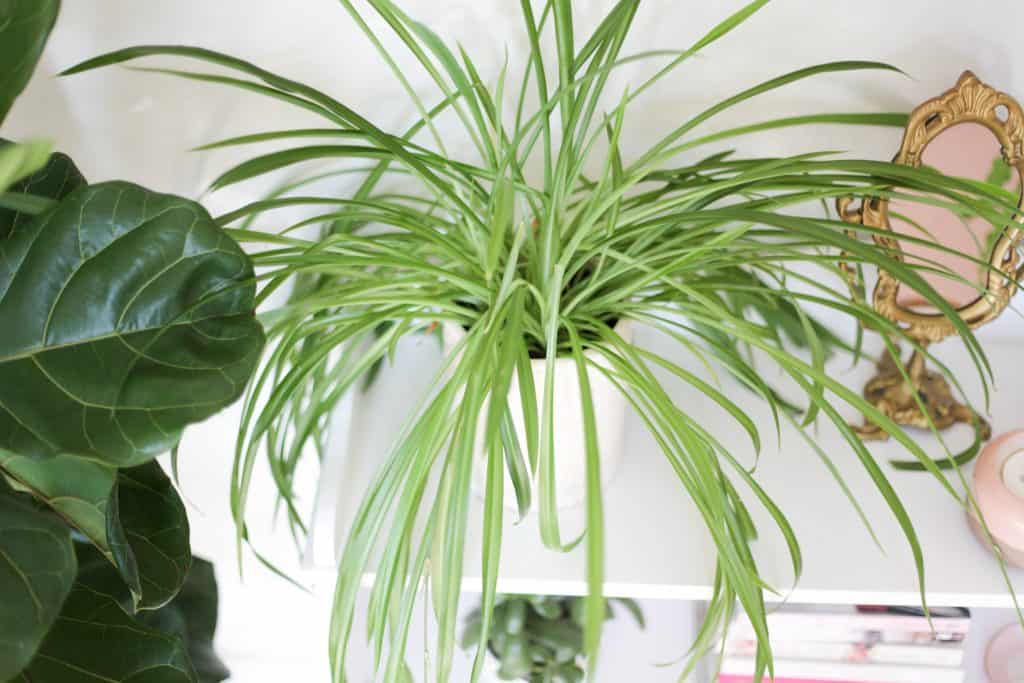
Spider plants thrive in environments with high humidity, but they can also do fine in low humidity. However, if brown is coloring the tips of your spider plant, then it could mean the air is too dry.
Humidity is the concentration of water vapor in the air. Many houseplants, like the spider plant, originate from jungles, where there is high humidity.
The spider plant needs humidity that is 60% or above. The wrong humidity level could harm or ultimately kill the plant.
Solution
If your spider plant has brown curling tips, place your potted spider plant in an environment with a temperature between 60 and 80 degrees Fahrenheit.
An occasional misting will help keep the environment more humid, or you can group several humidity-loving plants together, which helps keep some humidity in the air around them.
If your plant had been near an air conditioner, then you’ve found your culprit. The air is so dry that the spider plant’s tips have started to brown.
Disease
Disease can cause the tips of your spider plant to turn brown — and even black.
The most common disease that causes brown or black tips on your spider plant is bacterial leaf blight. At first, you’ll start noticing light spots on the tips of the leaf. Then the tips gradually turn to brown or black.
The cause of this disease? Too much heat and humidity.
Solution
Save your spider plant by removing all the sick leaves or damaged foliage. This will prevent the spread of the disease.
However, if the bacteria have reached the stems, you unfortunately have to immediately dispose of the entire plant as the bacteria can quickly spread to your other plants.
Fertilizer Problems
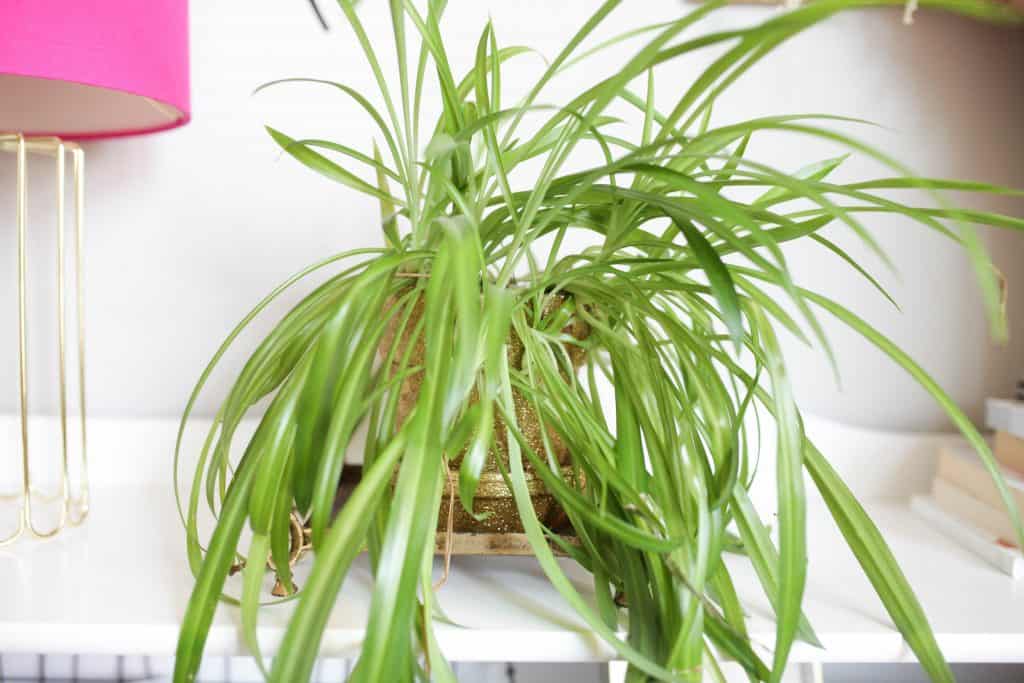
Another reason for the browning tips is wrong fertilization on your spider plant.
When you apply too much fertilizer, it can stunt the growth and development of your spider plant. Bad for houseplants, overfertilization will leave your spider plant weak and vulnerable to bacterial attacks and pests. Worse, some newbies mistakenly add even more fertilizer when the plant is showing brown tips.
Too much fertilization could cause salt buildup, which makes it harder for the spider plant to take in water.
Solution
If you think you may have overfertilized your plant, take it out of its pot and wash off the fertilizer using distilled or purified room temperature water. Do this four times, but make sure to thoroughly drain the plant in between washing.
Then make sure to fertilize only during your spider plant’s phase of active growth. Cutting the fertilizer amount in half can also do the trick in avoiding overfertilization.
Sunlight Problems
Spider plants should never be in direct sunlight. They love basking in the shade.
When exposed to too much sun, spider plants can suffer from “burn scalds,” which are sunburns. As a result, the tips of the plant will turn brown.
Due to the blade-like leaves of the spider plant, condensation (tiny water droplets) happens along the tips of the leaves in the evening of a hot, summer day. The following morning, when these water droplets are exposed to direct sunlight, they boil and sunburn the tips of the leaves, making them brown.
Solution
Take a break from watering your spider plant. Let the soil completely dry out, then loosen the soil. This will allow your plant to breathe.
Then set the plant in a bright area — but not under direct sunlight. When the soil gets too dry, water just the plant.
Basics of Spider Plant Care
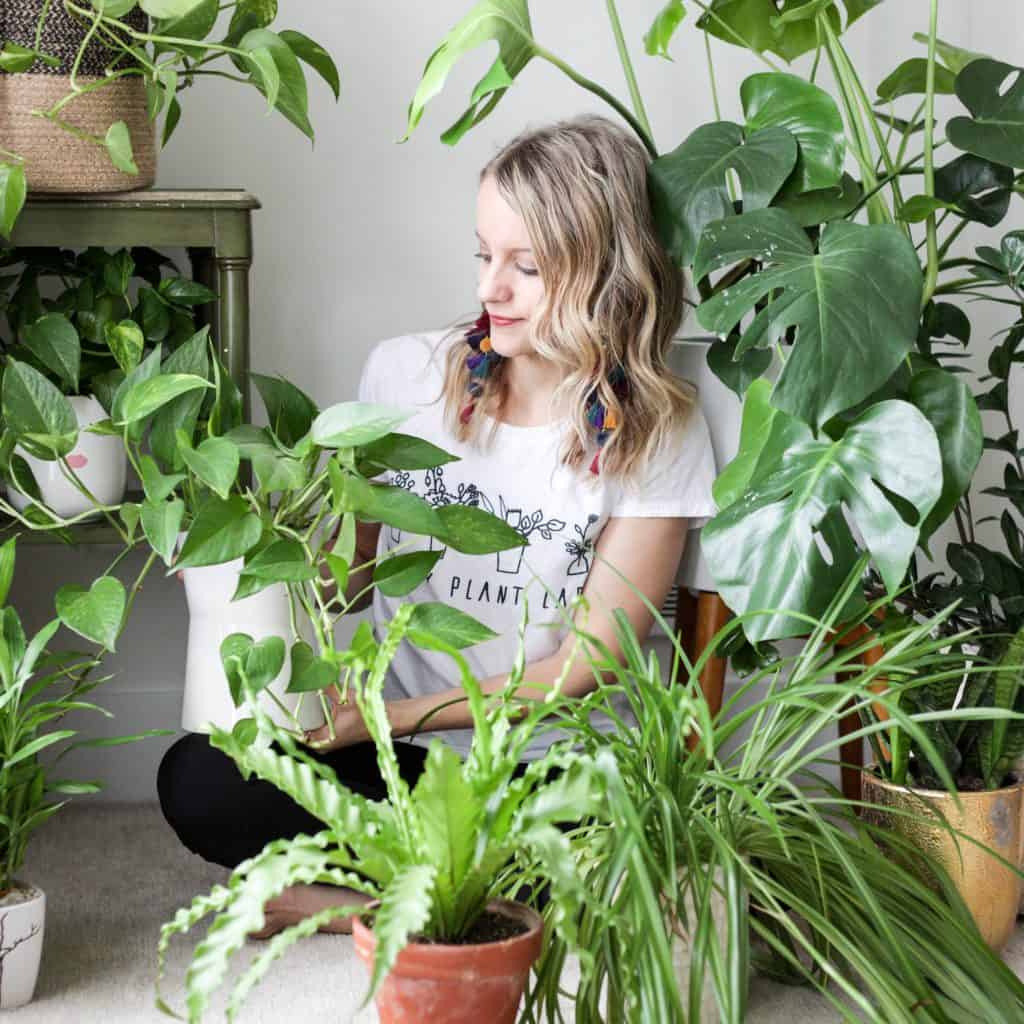
Spider plants aren’t demanding, which makes them a great option as a first houseplant or to add to a collection. Follow these basic care tips to make your spider plant feel loved and nurtured.
Shade
Keep your spider plant in a room with a moderate to bright light. They thrive in the shade but die under direct sunlight.
Moist Soil
Carefully and regularly check the soil. It should be slightly moist on the bottom half of the soil.
Right Temperature and Humidity
Keep the spider plants at 60 to 80 degrees Fahrenheit. Humidity of 60% will keep them healthy and beautiful.
Watering
Water only once a week, when the top half of the soil is dry. Use only distilled or purified water, or rainwater. Avoid tap water with its harsh and damaging chemicals.
Fertilization
Only fertilize once every two to three weeks. Use only a small dose. During the growing season, use any balanced 10-10-10 fertilizer. Avoid fertilizing during the winter.
Where to Buy:
Want more? Here’s tips on why your spider plant may have brown tips, how repot a spider plant and a step by step guide to propagate your spider plant!
Head here for some other amazing pet friendly houseplants!

